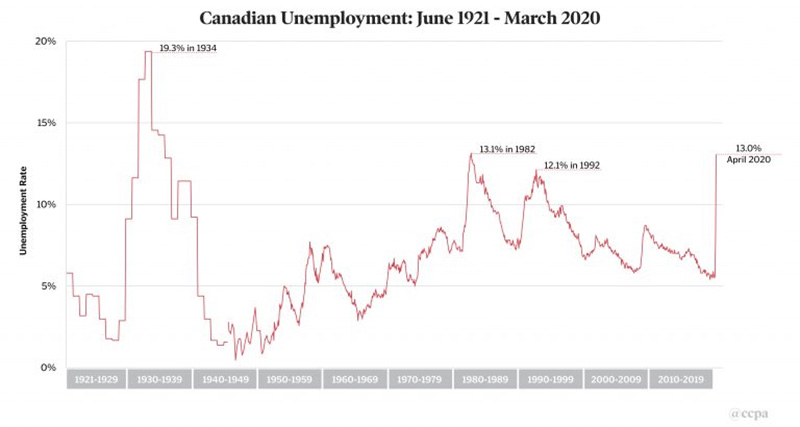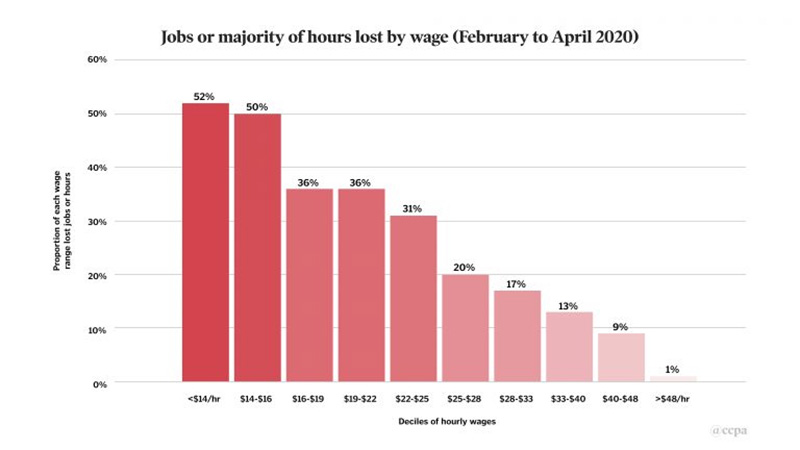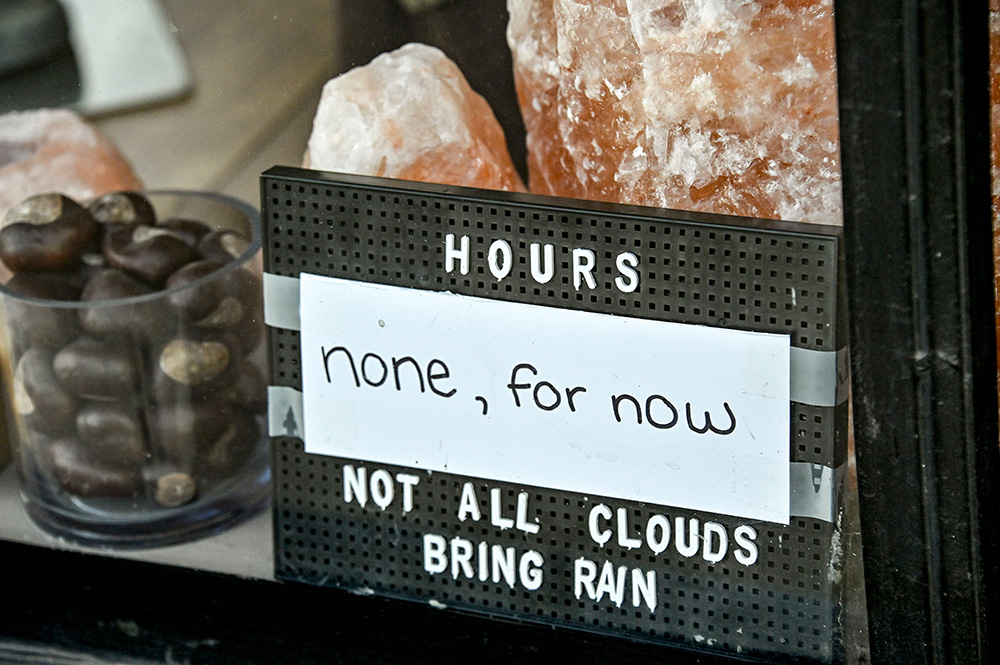We thought the March jobless numbers were bad, but it is almost a good news story compared to what we saw Friday in the April figures.
The unprecedented closure of major sections of Canada’s economy in mid-March is finally being reflected in the jobless numbers. Of course, without those closures we would be in a historic health crisis with emergency rooms overflowing and our health system shutting down, as we saw elsewhere.
In that sense, this shutdown was exactly the right thing to do. I look at these unprecedented joblessness numbers and think: this is how we protected many workers from contracting the virus — though they sacrificed their income.
The official unemployment rate for April is 13 per cent. This is a historic high. There was a single month, December 1982, when unemployment was slightly higher at 13.1 per cent. But after that one month you’d have to go back to May 1936 at the end of the Great Depression to see anything similar. Put another way all jobs created since October 2005, 15 years ago, have been lost by April 2020. While the March data was collected as the shutdown was in progress during the third week of March, the April figures show the full impact of a month’s worth of pandemic lockdown.

Unfortunately, the labour market picture is much worse than implied by the unemployment rate. The unemployment rate hinges on people looking for work, and if you aren’t looking (because the economy is shut down) or if you’re “employed” but with no shifts, you don’t count as unemployed.
Furthermore, there has been a tremendous loss of hours, even if workers are still getting some income. Put all those factors together and a shocking 29 per cent of those working in February had lost their job or the majority of their hours by April.
In some ways this was entirely predictable, given that as of April 19 (the last day of the April Labour Force Survey period), 35 per cent of all those employed in February were receiving the Canada Emergency Response Benefit.
To receive the benefit, workers would have to be laid off, be employed with no hours or be making less than $1,000 a month.
As of May 5, the most recent data shows 40 per cent of those employed in February were receiving the emergency benefit. While today’s job and hour losses may be predictable, it’s still shocking to see the numbers.
All told, more than three million Canadians who had a job in February no longer did in April.
This includes both the officially unemployed and those who are not looking for work because of job scarcity. Another 2.5 million Canadians remain employed, but have lost at least half of their hours. In total, 5.5 million Canadian workers — 29 per cent of all workers — have been laid off or seen big reductions in their hours since February.

The breakdown by hourly wage is the most shocking of all. The impact of the pandemic lockdown hasn’t been felt equally by all Canadian workers.
Half of all those earning $14 an hour or less have been laid off or have lost all their hours.
This compares to only one per cent of jobs lost or hours cut among the highest earning 10 per cent of workers who make more than $48 an hour.
For low-wage workers, who are far more likely to be renters, that may mean two full months of rent due with no regular income coming in.
While mortgage holders can defer payments to the end of their terms, there has been no similar federal help for renters except a moratorium on evictions which doesn’t pay back rent. (The B.C. government is providing rent subsidies of up to $500 per month.)
Youth (aged 15 to 24) are typically hit hardest during an economic downturn and this time is no different: they saw massive job losses in March and things have only gone downhill from there. In April, 43 per cent of youth lost their jobs or most of their working hours.
Take this in: 26 per cent of workers aged 25 to 54 lost their job or working hours in April.
The scale of this crisis is now being revealed in stark statistics. However, it’s not a crisis shared equally: low-wage and younger workers are experiencing job and income loss in this crisis much more acutely than everyone else.
As provinces begin opening economies back up, it will be these workers who will feel the most immediate need to return to work. They’ve lost the most income — in most cases, income they could hardly afford to spare.
But it’s also true that low-wage workers are much more likely to work in occupations that can’t socially distance.
Without protective equipment and procedures, and the option to refuse unsafe work and remain eligible for the Canada Emergency Response Benefit, those frontline workers are at much higher risk of infection when they return.
Employers and governments need to be very careful that those who were hit hardest by initial job losses aren’t also hit hardest in a second wave of infection.
We may be changing our notions of what essential workers are, but we can’t make them sacrificial workers in the process. ![]()
Read more: Local Economy, Coronavirus, Labour + Industry















Tyee Commenting Guidelines
Comments that violate guidelines risk being deleted, and violations may result in a temporary or permanent user ban. Maintain the spirit of good conversation to stay in the discussion.
*Please note The Tyee is not a forum for spreading misinformation about COVID-19, denying its existence or minimizing its risk to public health.
Do:
Do not: